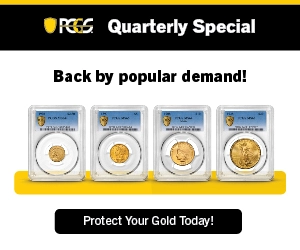By Jack D. Young, Early American Coppers (EAC) ……
Continuing on the theme of disclosing discovered current deceptive struck counterfeits and establishing one-page attribution guides for each, the variety for this installment has been the subject of a previous CoinWeek article from the folks at NGC entitled “Counterfeit Coin Detection – 1793 Flowing Hair Large Cent” (December 6, 2016), and a July 2016 Penny-Wise report. This is intended as a supplement to the NGC piece with additional examples and “sister marks” to aid in identification of these documented fakes.
2015 Internet example. Images courtesy Jack Young unless otherwise noted.
This edition features the 1793 S-5 discussed in late 2015. I had originally posted several similar examples on Copper Notes, the Early American Coppers, and titled that post “If at first you don’t succeed… try another TPG”.
1793 S-5 image courtesy of NGC
NGC evaluated this as “Altered Surfaces”; after an initial post on Copper Notes, this S-5 went off the radar for a couple of months. Then in February we were notified of images of a possible second matching example and this one was in the spotlight again.
After reviewing the images it became apparent that this is the same coin, sent to a second Third-Party Grader in the hopes that they’d see it differently. Again, this example failed to make it into a TPG holder.
1793 S-5 image courtesy of PCGS
After some casual investigative work the possible “pre-source” coin was found, an ex-2012 auction example. The reason I say “pre-source” coin is that it appears this one was “doctored” into the initial NGC coin, used to make the transfer dies and then submitted for certification to resell while coining the counterfeits!
Many of the marks/ pits remain with the exception of the main one stretching from the nose to the upper lip (coin below).
“Pre-source” Images courtesy of Heritage Auctions (HA.com)
Several members on Copper Notes weighed in on the quality of the suspected repair and re-engraving; appeared to be done with a high degree of skill.
After the initial Copper Notes post we were notified of two other examples that had been submitted for certification; one appears to be the example from the previously mentioned NGC CW article. I have highlighted many of the obvious “sister marks” between these four examples.
Obverse common sister marks (images courtesy NGC)
Many common reverse sister marks
Reverse common sister marks
Unfortunately the story doesn’t end here; some additional investigation resulted in finding another example listed for sale. This one was in a TPG holder, and had originally sold on the internet for $14,375.00 – again a testament to how deceptive the latest wave of struck “counterfeits” actually is. I contacted both the TPG and the owner with the concerns and both concurred. I understand they worked out something mutually acceptable; folks are getting stung on both sides (collector and TPG) by these.
In order to better help hobbyists identify possible struck fakes going forward, I have developed a single-page “Attribution Guide” to summarize images of the source example (if known), a struck clone and a known genuine one, and the visual “attribution/circulation” marks documented on all examples known; the page for these follows.
I can report this investigation has been a collaborative effort with several EAC members–including representatives of several TPGs instrumental in the sharing of images and info in the effort to “get the word out”–and I would like to thank you! Again I’ve drawn no conclusions about what is real or what is “Memorex”, but I am convinced more than one of these is counterfeit. I would ask that the readers be on the look-out for other duplicate examples and REPORT them.
Remember – The truth is out there!
Best,
–Jack

With the vast amounts of counterfeit coins entering the market, we need constant reminders and
illustrations as how to recognize the false coins. Need more professional numismatists in buying and
selling of coins, so they are fully aware of what to look for, and what to keep out of the hands of the
market place. Things like false coins, cleaned and repaired coins , altered dates and all the other
abuses that the profession should be aware of, have gone into the market when the dealer is not
fully educated what to look for. Qualifying tests should be manditory for a dealer to call himself a
dealer, rather just declairing himself a professional. It has taken many years of trial and error that’
has kept the hobby intact,, and therefore if one wants to be able to wear the badge of a Professional
than he should be obligated to take a test to prove his qualifications.
I found one of these in my late fathers coffee can of old coins. I’m pretty much convinced that it has to be a counterfit as someone has made distinctive scratches on the coin as if to damage it. I’ll take it to a dealer to confirm. Thanks!